Call to Schedule Free Consultation at Over 45 Centers Worldwide!
Call to Schedule Free Consultation at Over 45 Centers Worldwide!

DISEASE AWARENESS PAGE FOR R3 STEM CELL – CARDIOMYOPATHY
Heart failure is also known as chronic heart failure or congestive heart failure. It is a condition in which the heart is not able to pump enough blood throughout the body to maintain its needs. The heart’s central role as the source of blood, oxygen and nutrition to all the parts of the body makes heart failure such a critical condition.
Heart failure is often but not exclusively caused by the weakness of the muscles of the heart. In some other conditions, it is caused by hardening or stiffening of the walls of the heart.
Even though the name of the condition is heart failure, it doesn’t necessarily mean that the heart has stopped working completely. Heart failure refers to the fact that the heart is not functioning as it should, being unable to pump blood to all the parts of the body.
The symptoms of heart failure include shortness of breath, leg swelling and excessive and recurrent tiredness. The shortness of breath is usually worsened by physical exertion. Additionally, it may wake the individual from sleep in the middle of the night.
Differences between heart failure, a heart attack, and cardiac arrest
Heart failure, as we have discussed, is a condition in which the heart cannot pump sufficient blood to the other parts of the body. In this case, the problem is from the heart’s muscles and is a result of weakness or hardening.
A heart attack, on the other hand, is caused by muscle death. Some parts of the heart muslces die due to lack of blood supply. Without blood, there can be no oxygen, and that’s what causes the death of the muscles. Heart attacks are often a result of excess cholesterol in the body. The failure of the blood to reach the heart muscles is as a result of the obstruction of the arteries; it is not due to the insufficiency of the heart. Here the vessels are obstructed by plaques of cholesterol.
Cardiac arrest is a term that implies that the heart stops working. There is no pulse, and no blood is being circulated in the body. A cardiac arrest is caused by anomalies in the electrical system of the heart. These are often called arrhythmias, and they occur when the heartbeat becomes irregular due to some conditions.
The heart is responsible for supplying blood and oxygen to all the parts of the body, and it does this through the cardiac cycle. As blood flows through the body, it receives useful substances from parts of the body and ejects unwanted substances through some other parts.
For example, blood flows to the lungs picking up oxygen and dropping off CO2. It flows around the intestine to receive nutrients that were absorbed from the diet. It flows around the kidneys to remove excess water, salt and other substances.
All of this blood flow is driven by the heart, and in this way, it maintains balance in the body. The heart has four compartments—the left and right auricle, and the left and right ventricle. Each of these is responsible for receiving and pumping blood to various parts of the body.
The left side receives oxygenated blood from the lungs, pumping it into the body. The right side of the heart receives deoxygenated blood from the body and sends it back to the lungs for oxygenation.
The compartment of the heart affected by heart failure determines the symptoms experienced.
This is the most common type of heart failure, and it affects the left side of the heart. This is the side that’s responsible for pumping blood to the rest of the body, including the limbs and the organs.
In left-sided heart failure, blood “backs up” in the lungs because the heart can no longer pump blood to the rest of the body. Symptoms seen in this kind of heart failure include shortness of breath and build–up of fluids
Right-sided heart failure affects the right side of the heart—the part responsible for receiving blood from the body and sending it to the heart. Very often, right-sided heart failure is caused by left-sided heart failure. When the fluid build–up in the lungs becomes excessive, it can cascade into failure of the right side as well.
When receiving blood from the lungs and the rest of the body, the heart muscles relax to accommodate the blood. However, in diastolic heart failure, the walls of the heart stiffen, making it difficult to relax and fill up with blood.
The part of the cardiac cycle associated with filling the heart with blood is known as diastole, hence the name. Since the heart does not fill up properly, it cannot distribute blood to the rest of the body.
The systolic part of the cardiac cycle is responsible for pumping blood out of the heart into the body. When the heart’s muscles are weakened or enlarged, the heart cannot pump properly.
Heart failure can be caused by any condition that causes damage to the heart muscles. These include
The symptoms associated with heart failure are also seen in other conditions as well. However, these are also heart, and sometimes lungs related. The symptoms experienced in heart failure include
A study reports that in 2015, 40 million people in the world had heart failure. About 2 out of every 100 adults have heart failure. In people over the age of 65, the number increases to 6 to 10%. In individuals over the age of 75, the number is greater than 10%.
Heart failure is a condition that can affect anyone. However, some individuals are more predisposed to getting it than others. The risk factors include
When the symptoms appear, most people seek medical attention. Besides the symptoms and relevant history, other tests that are used to diagnose this condition include
There are several treatment options available for heart failure. However, it’s often best to take steps towards preventing the condition from ever occurring. Such steps include:
The treatment of heart failure is focused on preventing the progression of the condition and managing complications that might arise. Some of the means of handling this include:
This includes drugs like ACE inhibitors that can cause the arteries to relax and make pumping blood easier for the heart. Other drugs include Anticoagulants (reduce blood clotting), Digoxin (regulates heart rate in people with arrhythmias), Beta-Blockers and Antiplatelet drugs.
If an individual does not respond to medications, surgical procedures can be performed. Valve repair and a complete heart transplant might be necessary for situations where no other means of treatment are available.
Here are answers to many of the frequently asked questions we receive.
Arthritis can be classified into several types. Osteoarthritis is caused by the normal aging process of the body, or could be a result of injury.
Rheumatoid arthritis, the most common type of arthritis, happens due to autoimmune problems, wherein the body’s own immune system attacks healthy cells of the body. Infectious arthritis is caused by an infection to the joint. Patients with psoriasis may be affected by Psoriatic arthritis. Finally, excessive uric acid in the body can cause Gout, an arthritis that often starts at the toe.
Rheumatoid arthritis is an inflammatory form of arthritis. This disease causes chronic inflammation of the joints and can lead to deterioration of a variety of systems in the body. Rheumatoid arthritis occurs when the immune system attacks the lining of the membrane around the joints known as the synovium, which causes inflammation that thickens the synovium and ultimately deforms the cartilage and bone of the joints.
How common is it and who is at risk?
An estimated one percent of the entire world population suffers from rheumatoid arthritis. As the case with osteoarthritis, women are more likely to develop rheumatoid arthritis. Other groups at risk are people middle-aged or older as well as those suffering from obesity. Rheumatoid arthritis risk is inheritable, which may be accelerated by smoking or unknown environmental exposures.
Signs of the disease include swollen, tender joints that may feel stiff, particularly in the mornings. Fever, fatigue, and loss of activity are also common symptoms. Rheumatoid arthritis tends to manifest initially in the smaller joints like those in the fingers and toes. Symptoms are exhibited in joints of other body parts as the disease spreads.
Diagnosis begins with a physical test checking for redness, warmth, and swelling as well as the state of reflexes in the affected joints. Multiple blood tests are conducted as people with rheumatoid arthritis usually have elevated erythrocyte sedimentation rates and C-reactive protein levels. Additionally, X-rays, MRIs, and ultrasounds are conducted to track the spread of the disease.
While no cure exists as of now, research has revealed that the symptoms may be controlled by early application of disease modifying anti-rheumatic drugs (DMARDs). Steroids or nonsteroidal anti-inflammatory drugs may be prescribed depending on the case. Exercises to retain joint flexibility also provide some relief. If medications fail to slow down the disease, doctors may recommend surgery to repair or replace joints or swollen tendons.
Rheumatoid arthritis is an inflammatory form of arthritis. This disease causes chronic inflammation of the joints and can lead to deterioration of a variety of systems in the body. Rheumatoid arthritis occurs when the immune system attacks the lining of the membrane around the joints known as the synovium, which causes inflammation that thickens the synovium and ultimately deforms the cartilage and bone of the joints.
How common is it and who is at risk?
An estimated one percent of the entire world population suffers from rheumatoid arthritis. As the case with osteoarthritis, women are more likely to develop rheumatoid arthritis. Other groups at risk are people middle-aged or older as well as those suffering from obesity. Rheumatoid arthritis risk is inheritable, which may be accelerated by smoking or unknown environmental exposures.
Signs of the disease include swollen, tender joints that may feel stiff, particularly in the mornings. Fever, fatigue, and loss of activity are also common symptoms. Rheumatoid arthritis tends to manifest initially in the smaller joints like those in the fingers and toes. Symptoms are exhibited in joints of other body parts as the disease spreads.
Diagnosis begins with a physical test checking for redness, warmth, and swelling as well as the state of reflexes in the affected joints. Multiple blood tests are conducted as people with rheumatoid arthritis usually have elevated erythrocyte sedimentation rates and C-reactive protein levels. Additionally, X-rays, MRIs, and ultrasounds are conducted to track the spread of the disease.
While no cure exists as of now, research has revealed that the symptoms may be controlled by early application of disease modifying anti-rheumatic drugs (DMARDs). Steroids or nonsteroidal anti-inflammatory drugs may be prescribed depending on the case. Exercises to retain joint flexibility also provide some relief. If medications fail to slow down the disease, doctors may recommend surgery to repair or replace joints or swollen tendons.
Juvenile Idiopathic Arthritis (JIA) is the most prevalent form of arthritis within kids. It is characterized by persistent pain, swelling, and stiffness in the joints. The disease occurs when the body’s own tissues are attacked by its cells. In some cases, it can create more serious complications such as growth problems and eye inflammation.
It is the most common form of arthritis diagnosed in children under the age of sixteen. Certain gene mutations can make the body more vulnerable to the external environment, which can result in Juvenile Idiopathic Arthritis occurring. Although reasons are unknown, girls are more susceptible to Juvenile Idiopathic Arthritis than boys.
Commonplace symptoms include joint pain or a limp caused by the pain, swelling of joints and stiffness of the joints that results in clumsiness by the child. In some cases, the disease can manifest as high fever and rashes.
Diagnosis for Juvenile Idiopathic Arthritis is difficult as the pain and swelling in the joints could be attributed to a number of diseases. Quite a few blood tests are conducted to determine the status of markers like erythrocyte sedimentation rate, C-reactive protein levels, and quantity of anti-nuclear bodies, among others. However, many children with Juvenile Idiopathic Arthritis show no abnormalities in these tests.
The treatment for Juvenile Idiopathic Arthritis is geared towards making sure the child can maintain a regular level of physical activity. This can include different types of medication like nonsteroidal anti-inflammatory drugs to reduce pain and swelling or disease modifying anti-rheumatic drugs in more severe cases. Biologic agents may be recommended to help prevent joint damage. Physical therapy can also help the child maintain a full range of motion with or without joint supports or splints based on the situation. Surgery is the most extreme option used to improve the position of the affected joint.
LEARN MORE ABOUT ONGOING CLINICAL STUDIES SPONSORED BY R3 STEM CELL HERE.
Brand Ambassador Gallery
The USA stem cell leader offers procedures in
7 Countries including:
SUCCESS STORIES
R3 STEM CELL MASTER CLASS
Learn everything you need to know about the ever expanding field of regenerative medicine in this 8 part series that includes over four hours of entertaining content!
R3 STEM CELL INTERNATIONAL
R3 Stem Cell International includes 45 clinics in 7 countries. These Centers of Excellence treat all types of conditions with safe, effective protocols by expert stem cell physicians.
FREE STEM CELL CONSULTATION
R3 Stem Cell offers a no cost consultation to see if you or a loved one is a candidate for regenerative cell therapies including cytokines, growth factors, exosomes, and stem cells.
PROVIDER PARTNERSHIP
The R3 Partnership Program offers providers an all-in-one regenerative practice program including marketing, consultations and booked procedures!
The information provided by R3 Stem Cell is not a substitute for professional medical advice, diagnosis, or treatment. Individual results may vary and only your medical professional can explain all the risks and potential benefits of any therapy based on your circumstances. R3 Stem Cell does not recommend or endorse any specific tests, products, procedures, opinions, or other information that may be mentioned on this website. Reliance on any information provided by R3 Stem Cell, its employees, others appearing on this website at the invitation of R3 Stem Cell, or other visitors to the website is solely at your own risk. R3 Stem Cell is not responsible for the outcome of your procedure. The FDA considers stem cell therapy experimental at this point.







CALIFORNIA
FLORIDA
GEORGIA
HAWAII
IDAHO
ILLINOIS
INDIANA
IOWA
KANSAS
KENTUCKY
LOUISIANA
MARYLAND
MASSACHUSETTS
MICHIGAN
MINNESOTA
MISSISSIPPI
MISSOURI
NEBRASKA
NEW JERSEY
NEW YORK
NEW MEXICO
NEVADA
NORTH CAROLINA
OHIO
OKLAHOMA
OREGON
PENNSYLVANIA
RHODE ISLAND
SOUTH CAROLINA
SOUTH DAKOTA
TENNESSEE
The USA stem cell leader offers procedures in
7 Countries including:
Copyright © 2017-2024 R3 Stem Cell. All Rights Reserved.